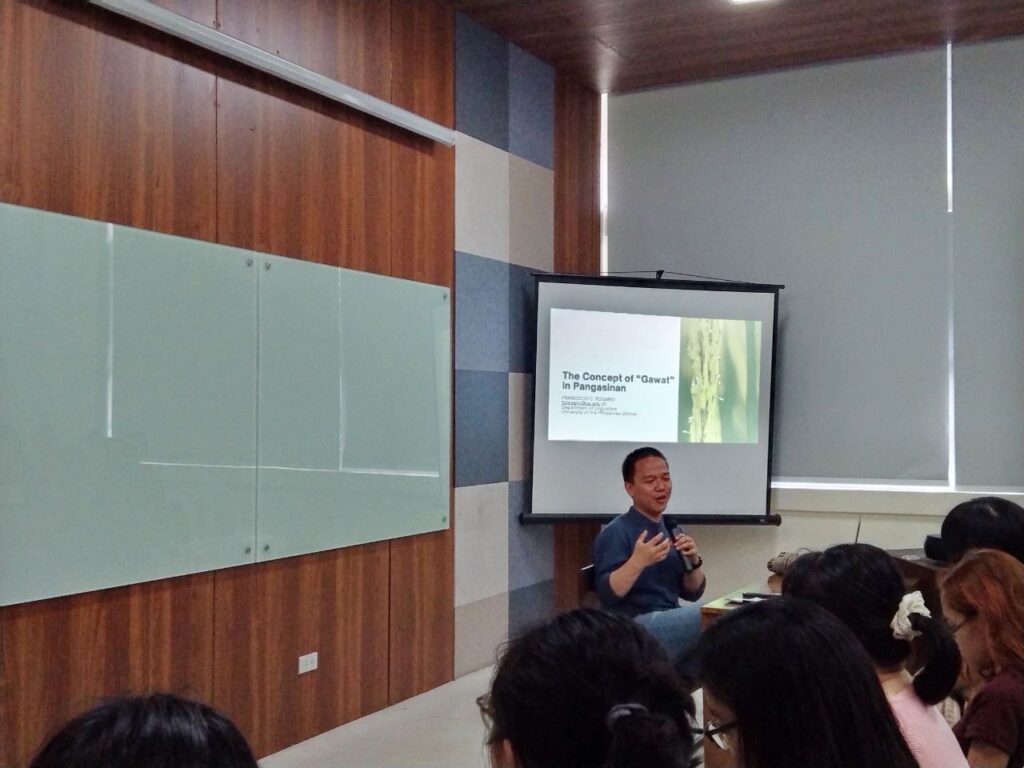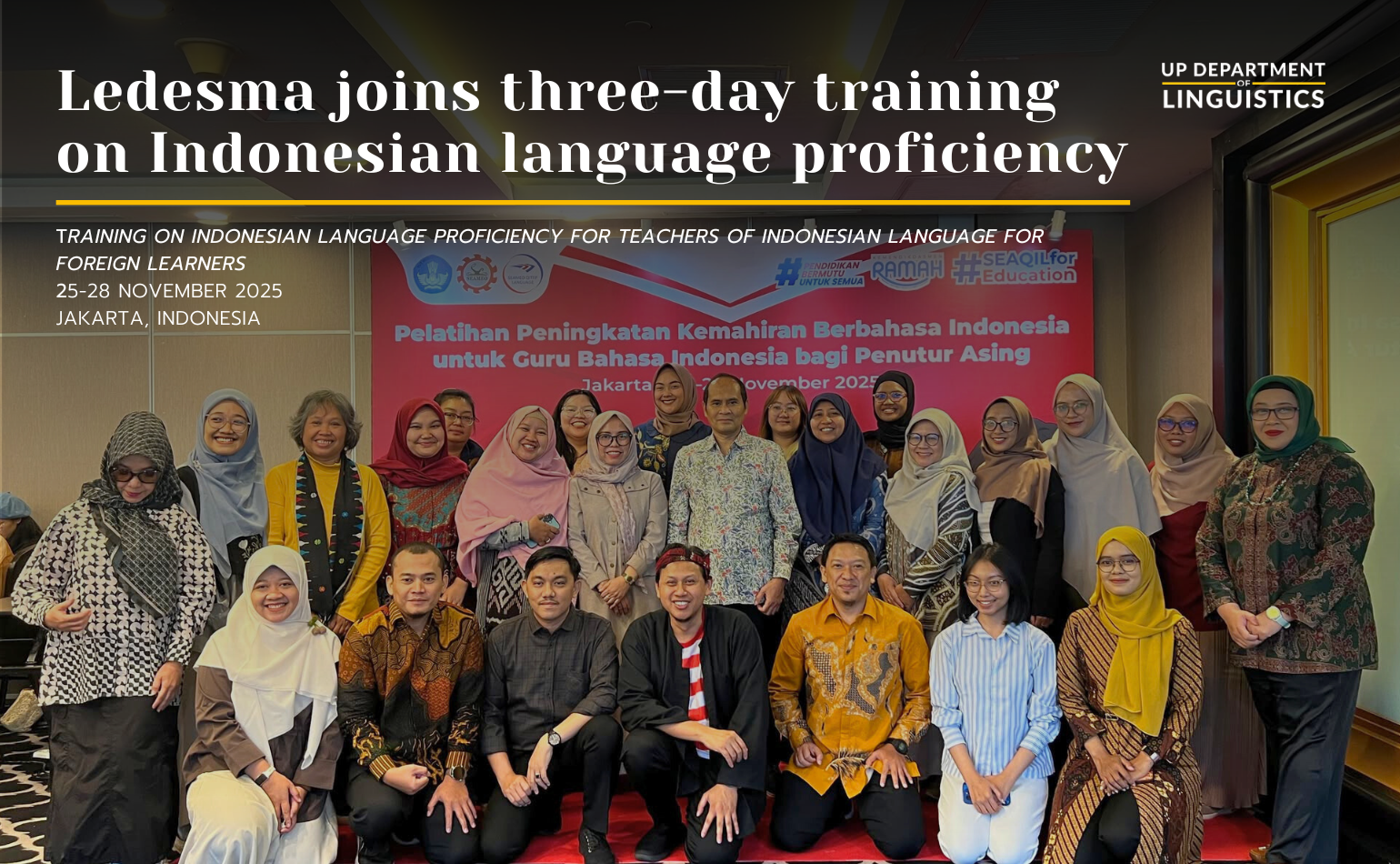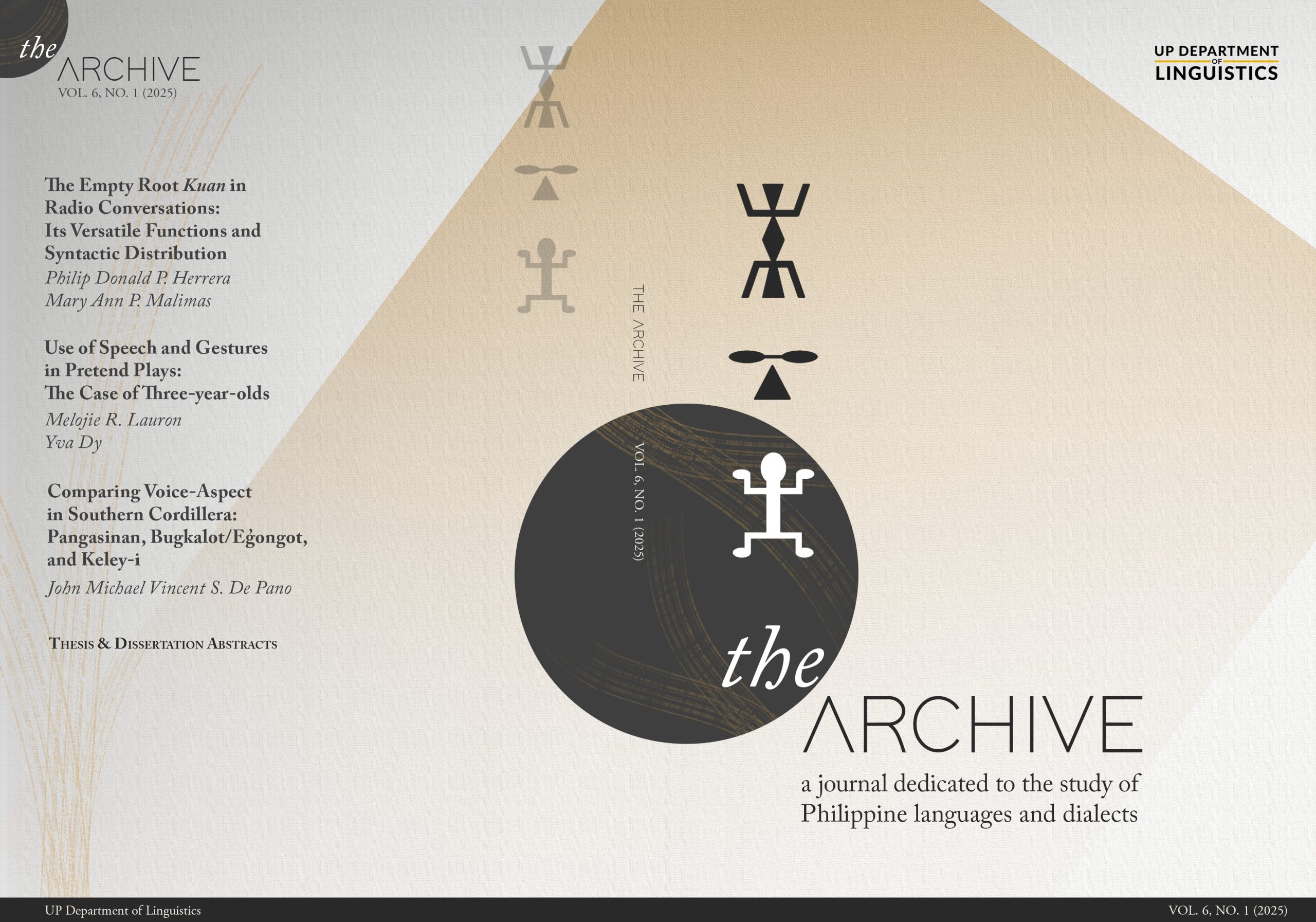
In the fourth installment of this year’s Philippine Indigenous Language Lecture Series (PILLS) last April 29, Assistant Professor Francisco Rosario Jr. presented his study entitled “The Concept of “Gawat” in Pangasinan,” which explored the rice culture and cultural significance of the term gawat in Pangasinan.
Rice, as a primary food staple in the Philippines, is one of the main agricultural commodities that has been ingrained in Filipino culture. Rosario cited that in Fray Miguel Ruiz’s Diccionario Español en Tagalo, Doreen Fernandez was able to identify 201 words referring to rice. In the website Pinoy Rice Knowledge Bank, different rice varieties based on its ecosystem were also classified using various terminologies.
“Maraming varieties ng rice na meron dito sa Pilipinas. And there are different names for each rice variety, you know kung namamalengke kayo ‘no, depending on the ecosystem and for the irrigated lowland variety alone, the names of rice varieties include nahalin, molawin, carranglan, talavera, pagsanjan, penaranda, matatag, tubigan, angelica, mabango and japonica. Maraming tawag doon sa iba’t ibang varieties ng rice,” explained Rosario.

For Pangasinan, there are also several terms that pertain to rice. “Number one, you have pagey referring to the rice plant. Tapos kapag madadaan ka sa isang rice field, you’ll see paserser. Ilik for the palay, ‘yung butil ng palay, and then belas for the uncooked rice, niluto for cooked rice, baaw or ‘yung sa bahaw, pero samin baaw, nagkaron na rin ng semantic change na ‘yung baaw ay cooked rice na rin at hindi lang siya yung tipong leftover rice ‘no, galor for the tutong.”
These diverse terminologies and the deeply-rooted common beliefs and expressions among ethnolinguistic groups showcase the cultural significance of rice. In Bontok, harvesting rice is done with minimum shock and disturbance to not drive or scare the spirits away. In Ifugao, it is believed that bulul figures guarded rice fields, increasing rice supply while it is stored.
Another belief includes waiting a month or two after harvest before eating the rice as it can cause blood stool and high fever when consumed immediately. Meanwhile, in Ifugao, a ritual is also held when newly harvested rice is eaten to request for tranquility when consumed by children. ”Parang pinapakiusapan nung mga tao ‘yung rice, dinadasalan nila na dapat kapag nakapasok na siya doon sa tiyan ng mga bata, hindi siya magko-cause ng illness or ng sakit sa kanila.”
Some expressions include:
“Marami pa siyang kakaining bigas”
– to describe a person who is still too young or not yet fit for a certain role
“Ang kasal ay hindi parang kaning kapag sinubo na, kapag napaso ay iluluwa”
– often said by parents giving advice to their children who want to get married early
For Pangasinenses, the concept of gawat pertains to rice as it is often heard during the lean months of harvest associated with irap (hardship/poverty), sakit (illness), inam (cravings), and eras (hunger).

In Lorenzo Fernandez Cosgaya’s Diccionario Pangasinan-Español (1731/1865), gawat is significantly defined as “the time before the harvest of the palay, when it is a seedling, either because the new harvest is already reached, or because the provision of the past usually arrives until then.” Such waiting period usually takes after the rice planting season in July until September, exactly a month before the actual harvest, when Pangasinenses hope and wait for a good harvest without any guarantee that it would suffice for months before the next one.
Rosario explained that gawat, as a linguistic expression, describes “this period of waiting before the rice harvest also entails difficulty as the resources become limited during this time.” Farmers are expected to spend a lot of money on seeds, fertilizers, and irrigation during a time when school-related expenses are also incurred and bad weather conditions (i.e. typhoons, southwest monsoons) threaten the condition of their rice plantations.
Gawat, in relation to the rice cultivation stages (International Rice Research Institute, 2010), takes place during the pannicle initiation, which Rosario described as the beginning of the rice plant’s reproductive stage.
Pangasinan expressions during this waiting period would then include:
“Malukon laray pagey, gawat la”
– ‘literally, the rice plant is pregnant, it’ll be a difficult time’
“Nanmukat-mukat laray pagey, gawat la”
– ‘literally, the rice plant is producing ground, it’ll be a difficult time’
“Nepnep tan gawat”
– ‘rainy season and period of scarcity’
“Tinmewek laray pagey, asumpal lay gawat”
– ‘the rice plant is bowing down, the difficult time has ended
Gawat or this difficult waiting period only ends when the rice plant bows down, signalling that rice grains can be harvested from the rice plant. This, as Rosario highlighted, makes the concept of gawat unique in Pangasinan as it is mainly heard during the lean season compared to the inevitability of hardships occurring during any time of the year.
“Rice is so pervasive that it has also penetrated our consciousness and as a concrete object, we use it metaphorically to explain abstract ideas like marriage, relationships, good values, human nature, as well as attitudes towards life. We view rice not just as something that meets our physical needs but also as a linguistic resource that we use to express certain experiences, ideas and concepts. We see this when we explicate the Pangasinan concept of gawat and how Pangasinan farmers use the life cycle of the rice plant to describe the situation which is highly influenced by socioeconomic considerations, seasonal changes, and weather conditions,” Rosario concluded.
The recording of Assistant Professor Francisco Rosario Jr.’s lecture is available on the Department’s YouTube channel.
Published by Thony Rose Lesaca



